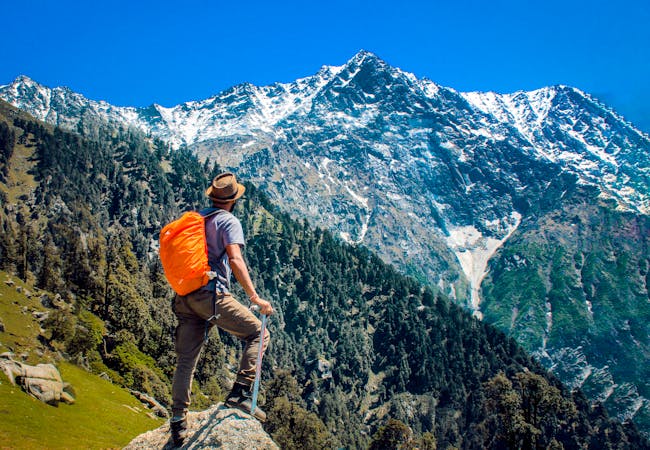High on Adventure: Nag Tibba Trek Unleashed

Overview: Nag Tibba Trek Unleashed
Hikers can see stunning scenery on the Indian Himalayas’ Nag Tibba trail. This Nag Devta-named tour shows the hills’ raw beauty and surreal charm. Nature enthusiasts and explorers will learn a lot on the Nag Tibba trek walk.
The Nag Tibba journey goes beyond summiting to connect with nature, push limitations, and appreciate the outdoors. Trekkers travel through thick woodlands, twisting paths, and high terrain to see snow-capped mountains, gorgeous valleys, and clean mea dows. These photos highlight the Himalayas’ natural splendour.
The journey is as important as the objective of Nag Tibba. Every step of the experience is thrilling, demanding, and amazing, from careful planning to the summit win. Escape the daily grind, unwind in the mountains, and find authentic adventure.
Travel Preparation
The Nag Tibba journey requires careful planning to ensure safety and fun in the harsh Himalayas. Be prepared to face hurdles and enjoy the trip, whether you’re a seasoned hiker or a first-timer.
Before visiting Nag Tibba, plan your adventure. Year-round trekking is possible, but particular seasons are preferred. April–June and September–November are great hiking months due to sunny skies, warm weather, and low precipitation. At higher elevations, trekkers should expect unexpected weather and temperature changes.
In addition to choosing the optimal trekking season, you need permits. Depending on route and entry point, trekkers may need local or forest department permits. Explore and obtain these permissions early to avoid last-minute complications and start your vacation smoothly.
Another vital Nag Tibba trek preparation stage is proper gear. Your bag defines your comfort, safety, and enjoyment of the trip, from hiking boots and warm clothes to camping supplies and healthy snacks. A detailed packing list and double-checking before leaving may help you remember everything.
Day 1: Beginning
Hikers at base camp are nervous and adrenaline-pumped. Their Nag Tibba trek began with backpacks and hiking sticks for Himalayan views.
Hikers first find deep, colorful woodlands where nature’s sights and sounds enchant them. The smell of moist earth wakes the senses with each breath, while tall trees cool the noon heat.
Hikers see unusual animals and bright flowers in the underbrush. They approach the woodland centre with adventure in mind.
The group arrives at the great overnight campsite by midafternoon. Trekkers rest with tents and campfires after hiking. The group bonds over stories and laughs under the starry sky as the sun sets and warms the mountains.
Day 2: Summiting
Hikers leave their sleeping bags at dawn to ascend Nag Tibba. Crossing rougher roads and terrain to attain their goal today will be arduous but rewarding.
Early departure and steady mountain climbing. They are reminded of their height and problems every hour as the air thins. Trekkers are strengthened by fellow trekkers and beautiful landscapes.
Snow-covered hills and rocky rocks along uphill trails. Everyone is amazed by the unexpected sight of rugged peaks and enormous valleys around every bend.
Trekkers are driven by summiting despite the difficulties. Every milestone brings the summit closer, demonstrating optimism and achievement.
Before dawn, the wild campsite sparkles gold. Trekkers wake up early to reach Nag Tibba. Post-breakfast and equipment check, the party
Day 3: Return
Summiting Nag Tibba prepares hikers for more adventure. First day, the group leaves the majestic mountain for civilization.
After breakfast, hikers descend the well-worn summit trail and leave camping. Even on downhill trails, trekkers must be careful on steep slopes and uneven terrain.
As they descend the mountain, trekkers recall their spectacular views, surprising friendships, and wilderness victories. The cruise reminds them of nature’s proximity and adventure’s transformational potential.
Trekkers recollect their adventures as they descend past famous monuments and beautiful scenery. Trekkers traverse through lush woods and quiet meadows in a tapestry of colors and textures to see the Himalayas again.
Advice and Tips
The exhilarating Nag Tibba trip takes careful planning to ensure safety and delight. Enjoy your journey with these trekking tips:
Never risk safety. Take a first aid kit, whistle, and maps. With expert guides, track weather and trail changes.
Pack light yet plenty. Strong hiking boots, weather-appropriate gear, a reliable backpack, water bottles, high-energy snacks and a sleeping blanket for cold nights are needed.
Hydration and energy are crucial at altitude. Fill water and drinks regularly. Walk with nuts, dried fruits, and energy snacks.
Delaying acclimatisation is necessary for altitude. Avoid exercise, check your body, and watch for altitude sickness nausea, headaches, and dizziness.
Honour nature by leaving no trace. Reduce campfires, trash, and walking cautiously to preserve the forest.
Respect local fauna and customs. Do not feed wildlife or disrupt nature; camp legally.
Finally, enjoy the Himalayas and tour. Nag Tibba is great for hiking, friendship, and memories.
In summary
We conclude this Nag Tibba trip guide with the Himalayas’ beauty, hardships, and life-changing moments. Nag Tibba walkers must test their strength, endurance, and adventure amid nature’s raw splendor.
Hikers can escape the daily grind at Nag Tibba. From bright forests to jagged mountain slopes with spectacular views, every turn inspires creativity, thought, and meditation.
Nag Tibba’s craggy summits and paths unite trekkers. Highland campfire stories and relaxation. Our trip allows us to appreciate nature’s strength and grandeur anywhere.
Visit Nag Tibba and appreciate nature and people. Enjoy the excursion, conquer obstacles, and be inspired by nature. Post-walk Nag Tibba memories should encourage fresh experiences and nature appreciation.



